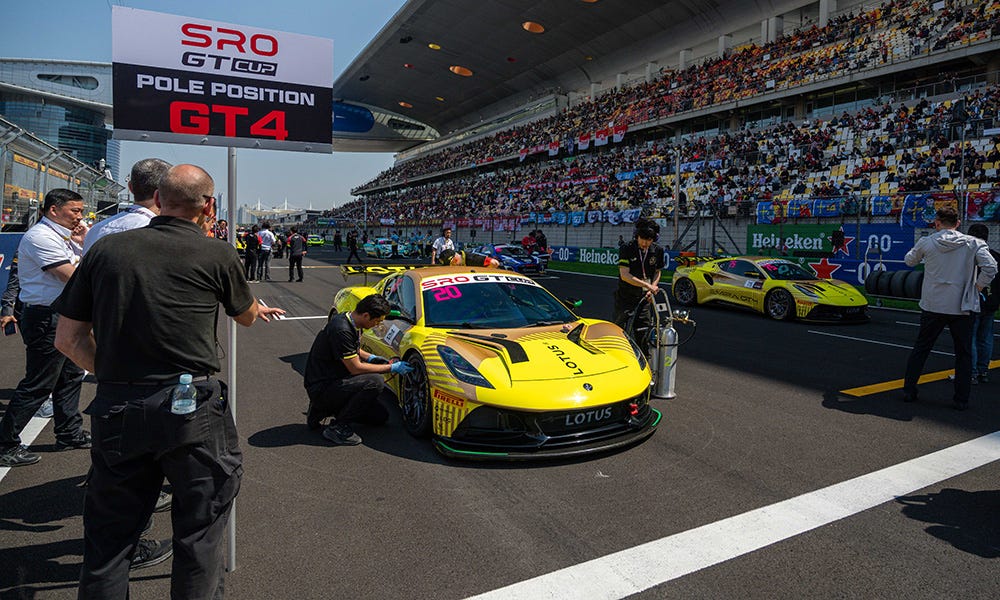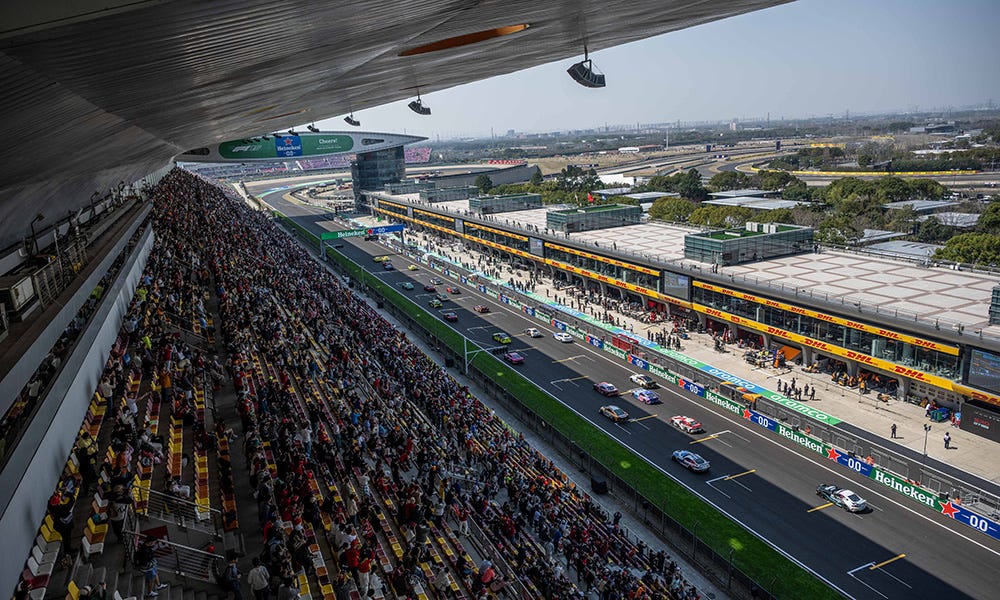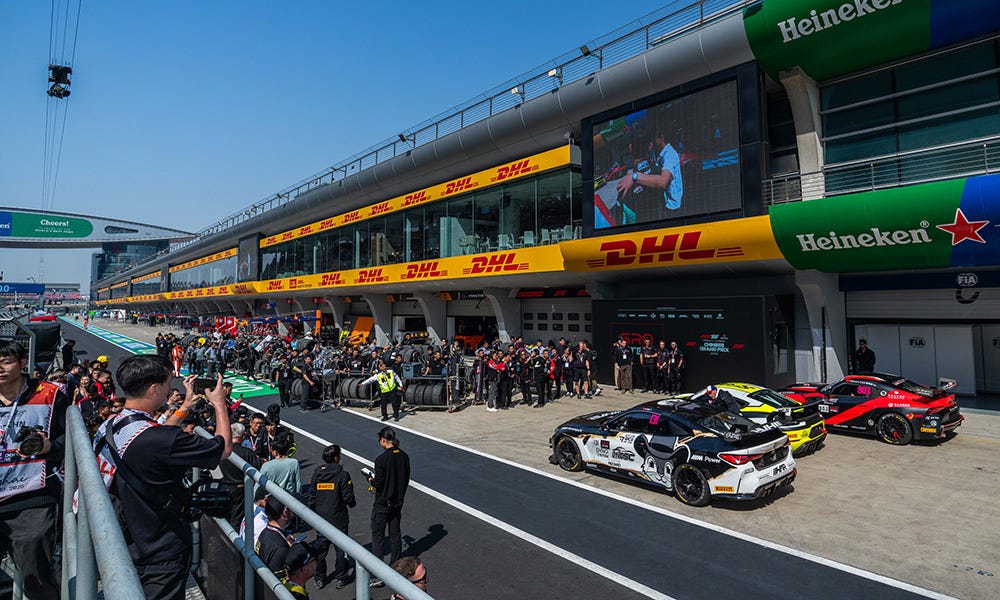Insight: How SRO Asia Pulled Off its Most Ambitious Launch Yet
Inside the 13-week period from launch to debut of the new SRO GT Cup in China...
The Asian arm of the SRO Motorsports Group is no stranger to starting new championships from scratch, having overseen the launch of the GT World Challenge Asia powered by AWS in 2017 (and its post-COVID relaunch in 2022), as well as the Japan Cup last year.
But its latest project might have been its most ambitious yet. In the space of less than four months, the SRO GT Cup, a new championship for SRO GT4 cars in China went from being just an idea in the minds of Stephane Ratel and SRO Asia general manager Benjamin Franassovici in an office in the paddock at Macau to a reality.
And not only that, the series launched on the support bill of the Formula 1 Chinese Grand Prix in March with a massive grid of 33 cars, representing ten manufacturers, in what is believed to be the largest-ever gathering of GT4 machinery on Asian soil.
That followed a great deal of work behind the scenes, including convincing understandably skeptical teams that the series would really happen, overcoming the complications of sharing a paddock with F1 for the first time, plus plenty of nervous waiting for entries to firm up.
“We launched on December 20,” recalled Franassovici. “Then it’s Christmas, and I need a holiday. The entry form was made available at the end of January. Then in February, it’s Chinese New Year, and the teams are off on holiday and not responding.
“But then, finally, entries started coming in. By the end of February, we knew we had 20 cars, and that would have been a success. As we approached the race, we had even more enquiries and we ended up with 33 cars. We even had to turn away some cars because we didn’t have enough pit space and equipment. It was totally mad, but I believed in it.
“Shanghai was a big relief. The hurdles, the complications were unbelievable… we didn’t get our passes to enter the paddock until midnight on Thursday! But we persevered, the weather was great, and we had 33 cars in the F1 pit lane. It was worth the hassle.”
Franassovici says the inspiration for the SRO GT Cup came from watching the 26-strong field that participated in the Greater Bay Area GT Cup Macau Grand Prix support race, and the conclusion was quickly reached that a spot on the F1 support bill in China would be the best way to ensure that the series started off with a bang.
But time was not on the SRO’s side, not least of all because the Chinese Grand Prix had been scheduled for a month earlier, on March 21-23, compared to the 2024 race.
“We knew there were GT4 cars in China, but they just needed a place to stretch their legs,” recalls Franassovici. “Seeing on-site all the cars taking place in the Greater Bay Area race made us realize the cars are here, and there are probably more out there.
“The biggest challenge was the short amount of time. It’s always last-minute, which is not unusual in Asia. People don’t want to be the first to commit. You have teams asking how many cars there will be, but we can’t tell them. It’s a chicken-and-egg situation.
“You have to convince people that, even though you have zero cars confirmed now, everything will be fine and it will be a great event, and that they should join us.”
The turning point, Franassovici adds, was when a timetable for the weekend was released featuring the SRO GT Cup name. “This was key,” he says. “Until they could see that the name of the series was on the official Shanghai F1 timetable, nobody believed us.”
The Shanghai support race was the first of a planned four rounds for the SRO GT Cup’s inaugural season. The next will take place in June at the little-known Pingtan Ruyi Lake International City Circuit, based on Pingtan Island in China’s Fujian Province. This was a late replacement for Zhuhai, which was announced on the initial calendar but was dropped as the circuit has gone up for sale and is therefore unavailable for racing.
How many of the 33 cars that raced in Shanghai will show up at Pingtan, away from the glamor of the F1 paddock, remains to be seen. But, like the inaugural round, it will serve as a qualifying event for this year’s Greater Bay Area GT Cup that serves as the season finale, following a visit to Beijing in October for the new GT World Challenge powered by AWS round.
“We know we aren’t going to get as many cars for the second round,” admits Franassovici. “We would be happy if we get 20 cars. I don’t think it would be realistic to have 30. But it’s only our first year, and we are going to grow.”
The format used by the SRO GT Cup is simple: two 30-minute races per weekend, with a single driver, and two classes, one for Bronze-graded drivers and the other for Silvers. The thinking behind the latter is to provide a stepping stone to GTWC Asia and other series to those with bigger ambitions of racing on the Asian continent.
Inevitably, keeping a lid on costs is a core aim, which also means any events held outside of China and Macau are unlikely in the short term – although the SRO GT Cup name cleverly does not specifically tie the series to racing solely in the Middle Kingdom.
“We are guilty of always being overambitious, but I think it’s a bit early now,” replies Franassovici. “Some of those teams don’t have big budgets, and also they are not used to traveling overseas, or having their cars in containers. So it’s a big step.
“Maybe one day we could travel to Sepang for a [GTWC Asia] support race, for example, when things are more stable. But I think we need to walk before we run.”
All of that is in the future however. For the time being, Franassovici and his team can take satisfaction in having pulled off the seemingly impossible in getting the series off the ground in such a tight timeframe, and with all the added headaches of racing together with F1.
“We had a lot of doubters, as usual when you are launching something new in a territory like this,” says Franassovici. “You even start doubting yourself. But when we launched GT World Challenge Asia in December 2016, people didn’t believe in it then either. We had three months to convince the doubters and in April 2017 we had a grid of 30 cars.
“When we pulled it off, the doubters were gobsmacked. But we always deliver.”
Photos: SRO






